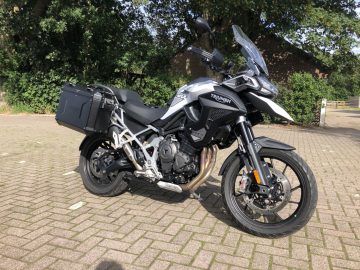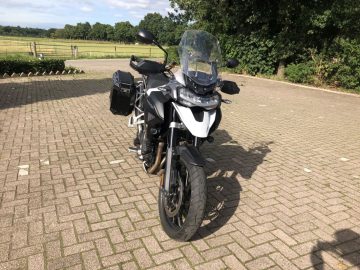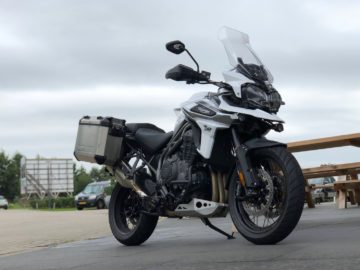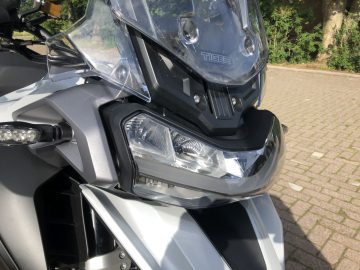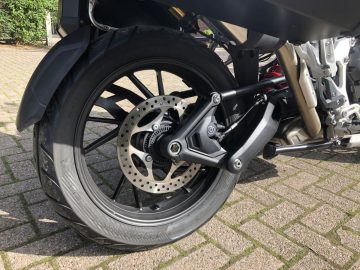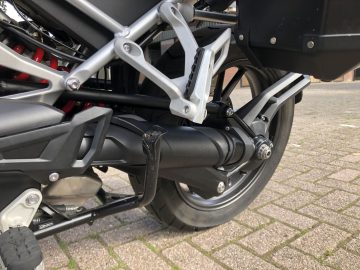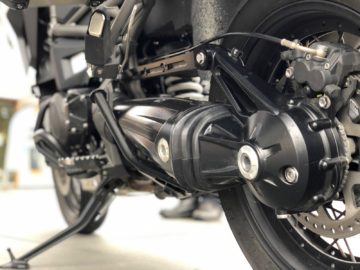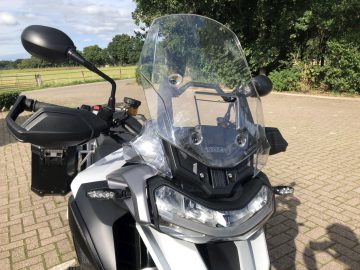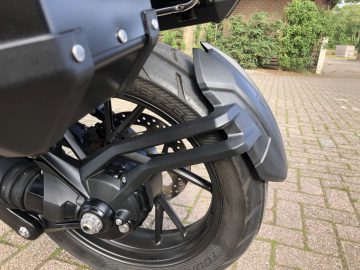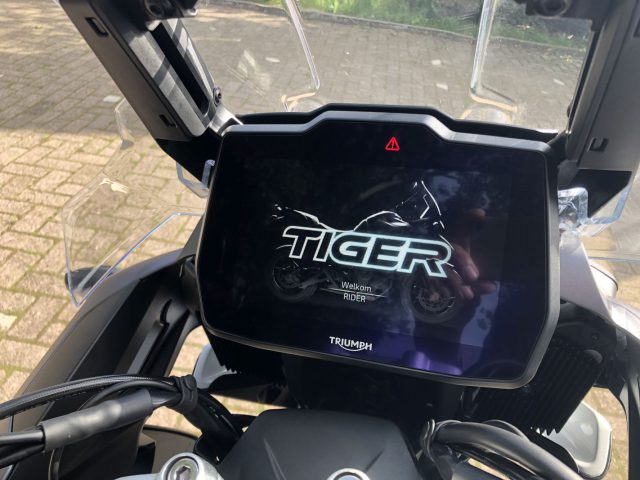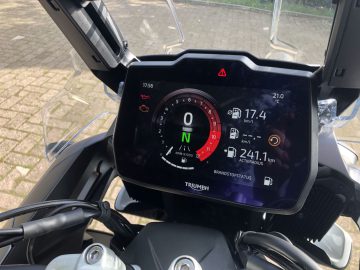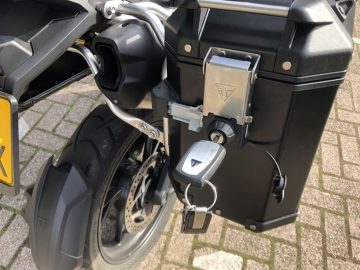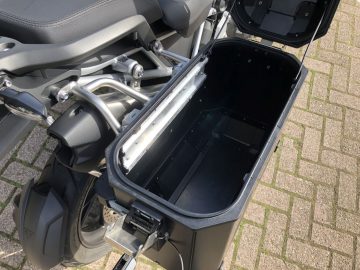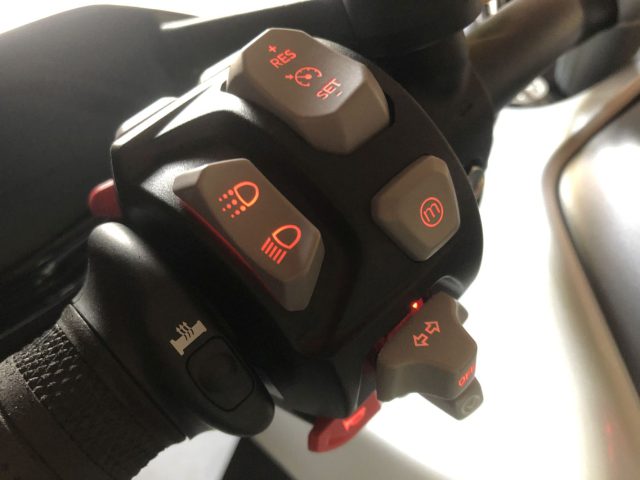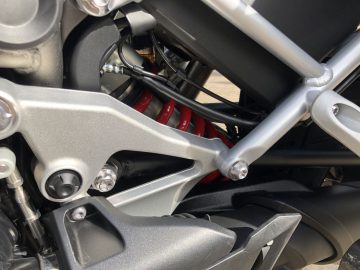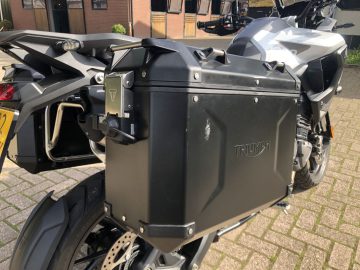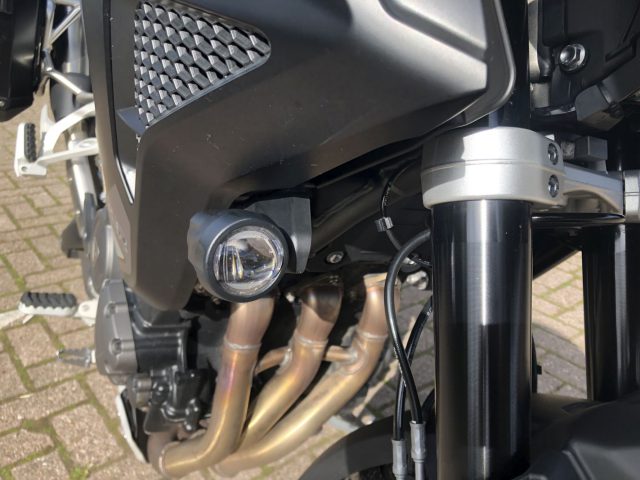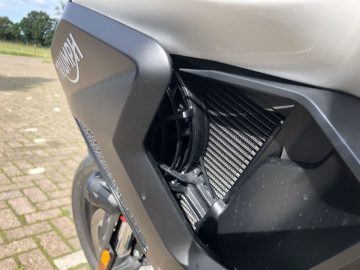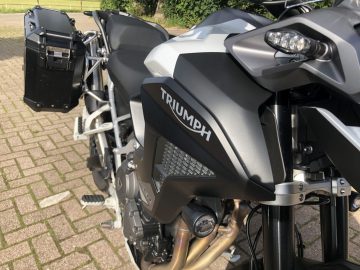Review – Triumph Tiger 1200 GT PRO (2022)
It is with no small amount of excitement that I get on the new Triump Tiger 1200 GT Pro. This is quite simply because I am extremely curious about the improvements. Because I have already driven more than 90,000 km on one of its predecessors. On my own bike, which is namely a 2017 Triump Tiger 1200 Explorer XR.
Triumph’s thickest all-roader
So yes, I am an experience expert with Triumph’s fattest allroader. A machine whose shaft drive makes it the most direct opponent to the BMW R 1250 GS. Even the pricing of this duo is almost the same. For both, you currently count down more than 20 grand. So they are at the upper end of the market.
Everything is new
Triumph has been thorough. Everything is new: from engine block, frame to drive shaft. Even though the new Tiger 1200 looks a lot like its predecessor with its appearance at first glance (see photos below). However, if you look a little further you will see that all the shapes are just a little different.
Adaptive cornering light
The new headlight consists of one piece and has LED lighting. This is perhaps another of the most visible changes from the dual headlight unit of the past. Also notable is the switch from a single-sided swingarm with integrated propshaft to a less colossal-looking double-sided rear wheel suspension. This Tri-Link swingarm looks more elegant and lighter, and it is.
Triumph Tiger shaft drive
In fact, that new shaft drive suspension contributes significantly to the Tiger 1200’s approximately 25 kg lower overall weight. This is pure profit and also very noticeable. My Explorer (about 270 kg roadworthy versus 245 kg for the new Tiger 1200) feels a bit top-heavy.
Manually adjustable windshield
The Tiger 1200 is noticeably lighter and has a lower center of gravity. The omission of an electric adjustment motor for the adjustable windshield also helps. On the new Tiger 1200, you can manually slide the screen up and down with a grip, while riding!
More neutral and stable
Maneuvering and pushing are easier, and the lower weight and center of gravity are also immediately noticeable in the first few meters. Where my Explorer has a bit of a tendency to “fall in” on short turns, the Tiger 1200 steers more neutral and stable.
Sound like a V-twin
The three-cylinder engine now sounds decidedly different due to a modified firing order. It’s a less regular rhythmic sound as if it were a V-twin. The unprecedented agility and exemplary response to the throttle at any speed has been retained.
Engine Tiger 1200 more powerful
Power is not in short supply with ‘my’ Explorer. However, its successor is overwhelmingly more powerful and accelerates more briskly. Maybe not yet as robust as the BMW R 1250 GS, but it’s not very far from it. The Tiger 1200 now delivers 150 hp with a displacement of 1,260 cc. That was 1,215 cc and 140 hp. Torque has increased from 123 Nm to 130 Nm. On paper the gain seems small, but in practice it is large. Also because the Triumph is a lot lighter.
Familiar seating position
Sitting is very familiar. The upright seating position has hardly changed, and on the more road-oriented GT Pro, the seat height is also the same as the Explorer. The saddle is adjustable in two positions (850/870 mm). However, the handlebars are just a bit closer to your body, which improves handling.
Digital cockpit
The fully digital color display is typically a feature of our time. Almost all new motorcycles have such a screen. Analog clocks are still rare. On the Triumph Tiger 1200, it measures 7-inches. The projection is bright and the split screen function allows you to display other information in addition to speed and tachometer.
Wireless key contact
With the GT Pro, you can keep the key in your pocket. Only to unlock the optional cases is it physically required. Otherwise, the engine communicates wirelessly with the key. You press the switch for contact (2x) to activate the motor. Pressing the rocker switch on the bottom will start the Triumph.
Fine Screen Animation
So welcome to the digital age, including at Triumph. By the way, it takes several seconds for the screen to finish the full animation after ‘turning on the ignition’. You don’t have to wait for its completion before you can start the engine. And that waiting is necessary with my Explorer. That one first makes the tachometer needle swing across the range. You can press the start button, but the starter motor will not move until the needle has returned to its starting position.
Tiger GT Pro with quickshifter
The GT Pro has a quickshifter as standard. Thus, shifting can be done without using the clutch. That thing works superbly, even at low rpm this shifter still shifts back seamlessly without shock or noise.
And five driving modes
Five riding modes are offered by the GT Pro, on my XR there are three (Road, Rain, Off Road). These are also selectable on the test bike and in addition it offers a Sport mode and a Rider mode where you can set the parameters for the control systems yourself.
Smooth suspension (Showa)
Standard on the Tiger 1200 GT Pro is semi-active shock absorption and suspension. I also have on the Explorer XR, but the Showa suspension that Triump now employs works just a tad better. Damping and suspension are adjusted even more precisely while driving. Under hard braking, the front engine dives less into the springs, and at high speed the suspension is noticeably harder than at lower speeds. Then the suspension neatly catches high speed bumps. Offroad, too, this character leads to better contact with the ground and better control.
Best set of Brembo brakes
Brakes have been great on Triumph’s all-roader for years, but now they’re even better thanks to top-notch equipment from Brembo: M4.30 Stylema. By the way: a hill hold feature is standard on the GT Pro. Very nice when you need to accelerate on an incline.
No more hot cross
A striking feature is the view of the front of the engine block and exhaust pipes. Here the radiator is missing! It is there, in two parts, and hidden in the upper parts left and right next to the fuel tank. The solution is not only attractive, it is also practical. Warm air currents are directed away from your body. The saddle heats up much less as with previous Tigers and you can understand that is nice for your ‘noble parts’.
Conclusion
Triumph has a serious all-roader/adventure bike with the new Tiger 1200 in the slightly more expensive segment above 20 grand (current price level from 20,700 euros). You get a motorcycle with very comprehensive equipment and lots of rider assistance. The GT Pro tops that off with such comfortable extras as grip heating, quickshifter, adaptive cornering lights and cruise control, among others. The Tiger 1200 GT Explorer is even more geared toward long trips. You then get a 30-liter tank and, among other things, a heatable seat. Also, the crash bars are then standard. Meanwhile, the price comes to 25,500 euros.
The Tiger 1200 Rally Pro and Rally Explorer have more off-road-focused styling and outfits. You can see it in the wire wheels (front 21-inch instead of 19-inch), but also the suspension travel (220 mm) is longer. There are then 6 driving modes. The Explorer has the same extras as the GT Explorer, including, therefore, the 30-liter tank. In all its versions, the Triumph Tiger 1200 is a motorcycle that, above all, steers easily and stably. A motorcycle for long distances, but also for commuting and everything in between. The good workmanship and high-quality components stand out. A motorcycle that will offer you many years of carefree riding. Its predecessor proved that to me, at least. Pleasant is also the long service interval: major service once every 32,000 km.


